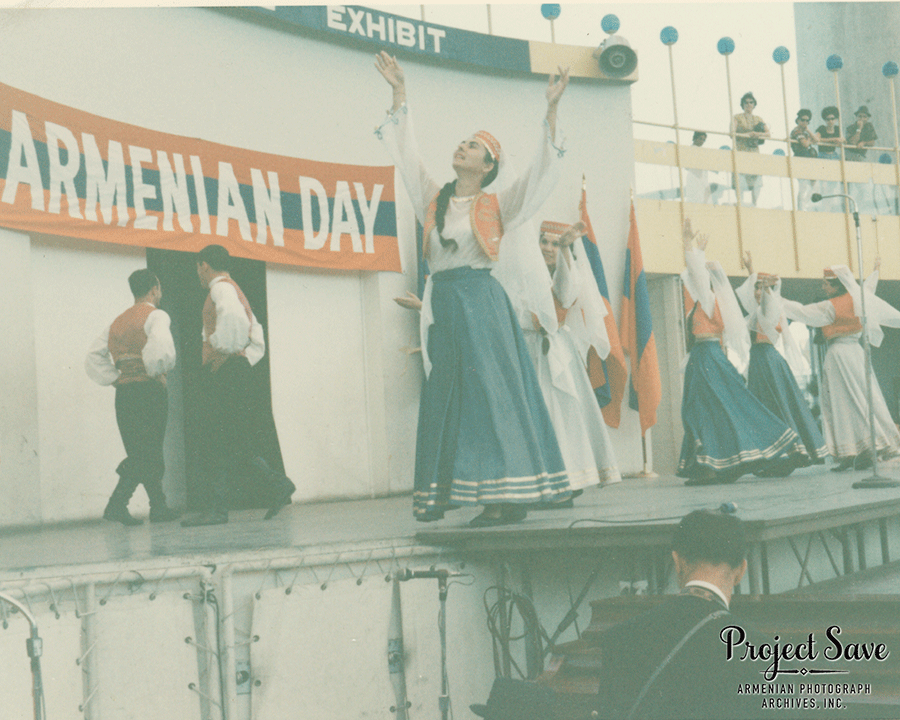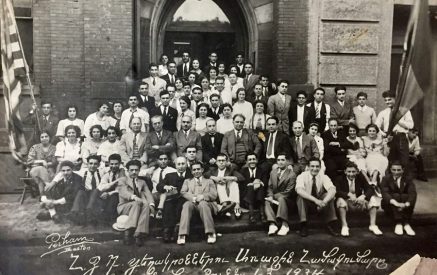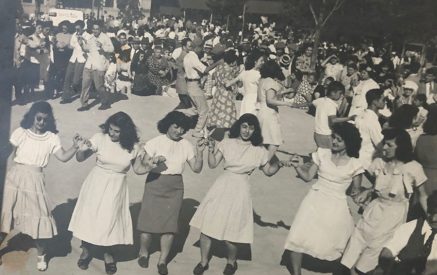by Stepan Piligian
A popular theme in our communities is relating our challenges to our leadership. As illustrated in my last column, there is certainly a leadership crisis in institutions such as the Armenian church. It is important to distinguish between leaders and leadership. Leaders in our communities are appointed or elected. Leadership is a reflection of their impact and can vary among leaders. Limiting our concerns to leaders would be incomplete and shallow. There are certain behavioral traits and cultural values that are both contributors and detractors. We are a community that lives in fear of change. We confuse retaining critical traditions with an intolerance of any change.
The lack of change at times reflects the desire of the elite to concentrate and retain authority. How else can one explain not only the shameful division of our church in North America but also the broader jurisdictional issues that remain frozen with the two Sees? Over time, the faithful have developed a loyalty to either See based on personal experience. We feel attached to our local parishes and are less concerned about seemingly distant divisions. If it doesn’t impact our daily lives, then we tolerate the occasional inconveniences. As long as the faithful accept that role, why would the authority structure in either See be motivated to change? We choose to ignore the long-term impact.
Read also
The diaspora has struggled with change for decades. The survivor generation built a community that closely reflected its ancestral upbringing through compatriotic organizations and use of our native language. The succeeding generation, led by American-born Armenians, brought American values into our community as we began to “modernize.”
Today it is fair to say that change is a struggle that knocks at our door, yet we often refuse to answer. Denial seems to be a better alternative. Life in the diaspora is a struggle for identity survival. Educational and wealth opportunities are well defined and fuel the sustainability of our community, as long as we are not absorbed by assimilation. This is the major difference between life in the homeland and in the diaspora. Losing one’s ethnic identity is very difficult in a homogeneous homeland where culture, language and personal identity are constants. Armenians who wish to dilute their identity in the homeland find it challenging. In the diaspora, ethnic identity is a choice made personally or by the environment you enjoy. This freedom to choose is the main source of fear. We associate most change with a surrender of our core values. This is particularly true in the church, where change is difficult yet intermarriage and a secular world surround us. Still we cling to the status quo and keep the “lights on” for another generation.
I would like to offer a comparison between today’s diaspora in America and the experiences of our ancestors in historic Armenia. In its long history, Armenia has been invaded, occupied and subdued by nearly every regional force in the Middle East and Eurasia. Invasions brought atrocities and assimilation. The forces of cultural assimilation brought on by invading nations would have destroyed most people. In fact, history is full of former peers of Armenia that did not survive these advances. Yet, Armenia lived to see another day. The greatest catastrophe that Armenians experienced did not destroy the Armenian identity. A majority of the population in the western regions was massacred, a historic homeland usurped and the survivors scattered across the globe. Those scattered seeds built what we today refer to as our powerful diaspora. We have survived through adaptation. In our modern history, when the diaspora was formed, adjusting was not a new behavior. In fact, it was a vital part of our behavior for centuries.
Our faith and our ability to adapt have been the key ingredients in our journey for survival. Much has been written about the central value of our faith. Many of us tend to be critical, speaking against the building of too many churches. Our churches have been destroyed by the Turks and others, but our faith was not lost, because it did not simply reside in a building. The invaders could not steal the faith buried deep in our hearts. Adaptation has been a consistent skill that has enabled our continued presence.
Vartanantz is a highly visible example of when our ancestors decided to take a stand for over 34 years against incredible odds to preserve our faith and identity. Clearly, our history would have had a different path or ended were it not for the vision in 451-484. Often, our people made smaller compromises to survive. They understood what had to be retained and what could be expended for the benefit of the long term.
Often, political independence was sacrificed in order for local cultural identity to be secured. The medieval model of Armenian princes operating under foreign conquerors illustrates this point. After the fall of the Bagratuni dynasty in the central highlands and resulting Seljuk Turk invasion, Armenians undertook a mass migration to the Cilicia region in the 11th century.
To survive the Byzantine advances and Turkic onslaught, Armenians migrated to a new region and established a thriving kingdom in Sis. It became a cultural and religious center until the Ottoman Turkish genocide in the 20th century. Consider the challenge of moving whole communities and re-establishing viable political, religious and military roots. Does anyone believe that this was accomplished without significant adaptation? Our history tells us that they understood adjusting without capitulating. Armenians are not strangers to the threat of assimilation. They have lived with the impact of Persian, Arab, Byzantine and Turkish invasions yet survived.
How? Without sovereignty or freedom, they focused on what was important and foundational to our identity. They accepted the influences of invading cultures but held on to their core. We have different dialects today that reflect various periods of influence throughout our history. It is still the Armenian language. When Armenians from the diaspora go to Armenia for the first time, they are anxious about the eastern versus western dialect. This is a reflection of our political history. Persian Armenians and Eastern Armenians share a common outside influence, reflected in the dialect. When you arrive in Armenia, the anxiety is reduced. The minor inconveniences are forgettable. We are all Armenians. Change reflects adaptation, which enables survival.
Here in the American diaspora, we should not fear change but rather embrace the opportunity. It is far better to manage change rather than allow it to manage us. We are an evolving human species, and Armenians are a part of this world. Change is inevitable and should be encouraged to preserve the core of who we are. Resisting change will accelerate assimilation and cause unnecessary losses. Since last week’s column, I have received many heartfelt comments about the tragic relationship with the Armenian church. Armenians of faith see the church as the primary communal vehicle of our Christianity, yet they are frustrated with its static position in a difficult environment in the diaspora. Instead of addressing our challenges, as our ancestors did when foreigners challenged our identity, we have a tendency to ignore the “elephants in the room.” The impact of intermarriage, for example, is not going away. Our response has essentially been to be “welcoming” to non-Armenian spouses. There is a significant difference between “welcoming” and providing integration programs on church history, structure and canons. Some parishes may need language flexibility based on their demographics, and others may not. We seem to fear change because it could lead to our decline by diluting who we are. My perspective is that ignoring threats is a certain path to decline, and thoughtful change can reverse trends toward decline. We are the stewards of the church. It was given to us by our ancestors when it was brought to these shores.
We are four or perhaps five generations into the U.S. diaspora experience. Clinging to all of the past will accelerate our decline. We must always remind ourselves that identity is a choice in the diaspora. Far too often, discussions on change conjure up perceptions of a radical dismantling of our identity. The people who advocate change also love the Armenian church and our culture. Their intent is to ensure survival by enabling adaptation. This is no different in concept than what our ancestors did for centuries to survive. Certain miracles have happened in our history, when the strain of survival became too great. Prior to the invention of the Armenian alphabet by Mashdots, Armenia was politically divided and as a result culturally fragmented. Although Armenian was a spoken language, written expression was in the dominant regional cultures such as Greek, Aramaic or Persian.
This was both limiting and culturally threatening to the national character. St. Mesrob’s gift from God and the following period of the Holy Translators altered the course of our civilization. In 1918, ravaged by genocide with huddled masses cornered into eastern Armenia, the miracle of Sardarabad defied all logic and prevented the erasure of Armenia from the map of the region. These are not coincidences. In our faith, these are blessings from Our Lord. It has been our responsibility, whether in the fourth century, Middle Ages, in Armenia or anywhere in the diaspora, to make wise forthright decisions that protect our history and future. This requires us to identify the core of our identity and protect it.
In the case of the church and its sluggish leadership, the faithful have an equal responsibility to ensure we are moving forward. Blaming leaders may quell one’s conscience, but accomplishes little. It is irresponsible for adherents to complain as victims yet do little with their voices to promote progress. In each parish and diocese, we have an opportunity. Make your voice heard and demand results. The same should be applied to community organizations. Do not let the organizations become more than the mission they serve. Raise the expectations. Adapt to changing needs, so you can continue to serve with relevance. This behavior begins when each of us looks in the mirror and says, “What have I done today to overcome our fear of change and make our future in the diaspora more secure?” Even the best of our organizations are susceptible to becoming stale. You are the check and balance to ensure we remain effective.




























































